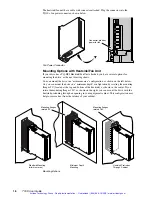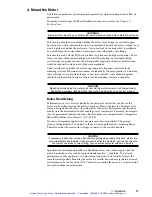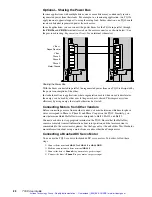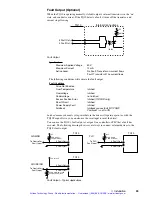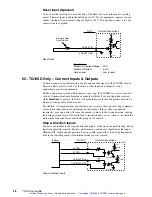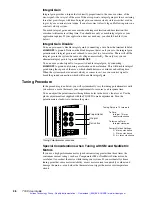
➁
Installation
27
Controller with Differential Output
If your controller has a differential output, then it has two command signals. One is a signal
that ranges from -5VDC to +5VDC. The other signal ranges from +5VDC to -5VDC. The
two signals mirror each other—their magnitudes are equal, but they have opposite signs.
Your controller should also have a ground terminal to use as a reference for the positive and
negative command outputs.
Controller
+ Command Out
- Command Out
Command GND
20K
Ω
20K
Ω
10K
Ω
10K
Ω
7
8 COMMAND–
9 COMMAND SHLD
Internal Connections
TQ10
Controller—Differential Output Connections
The figure above shows how to connect these three outputs to the TQ10.
Controller with Isolated Output
Some controllers have isolated command outputs, and may require a voltage source to
power their outputs. The TQ10 has three pins available to power isolated outputs on a
controller. These pins p15VDC, -15VDC, and ground.
The next figure shows a typical controller with isolated differential outputs, and illustrates
how you can connect it to the TQ10.
20K
Ω
20K
Ω
10K
Ω
10K
Ω
7
8 COMMAND–
9 COMMAND SHLD
Internal Connections
Controller
+ Command Out
- Command Out
GND
3 -15V
-15VDC In
2 +15V
+15VDC In
Isolated
Output
Circuitry
TQ10
Controller—Isolated Output Connections
If your controller has an isolated single-ended output, connect the
±
15VDC outputs as
shown in this figure. Connect the command and ground signals as shown earlier in the
section on single-ended outputs.
Artisan Technology Group - Quality Instrumentation ... Guaranteed | (888) 88-SOURCE | www.artisantg.com




